Belgian’s beer world has yet another new lambic producer, and this one is located on a very historic and beautiful lambic brewing heritage site. Brouwerij Kestemont opened on the same grounds as the old Brouwerij Goossens in the village of Sint Gertrudis-Pede (Schepdaal) which is part of Dilbeek, in 2019. Kestemont started as a lambic blendery, and a brewery was added in 2021, and they began brewing in March of that year. The beers are so new, in lambic terms, that Kestemont just released their first brews to the public in September 2022.

The site was purchased by the Kestemont family in 2016, hence the name of the new brewery. The lambic brewing, barrel aging, and blending is done inside an old barn that dates to the 18th century. It is adjacent to the main house, and an old cobbled courtyard.
The Goossens site was designated as a protected monument in May 2017, and then as an established architectural heritage site in August 2021. The Goossens breweries had already had a protected status since September 2009. The site is actually listed as “Farm brewery with Goossens malthouse” by the Flemish government.
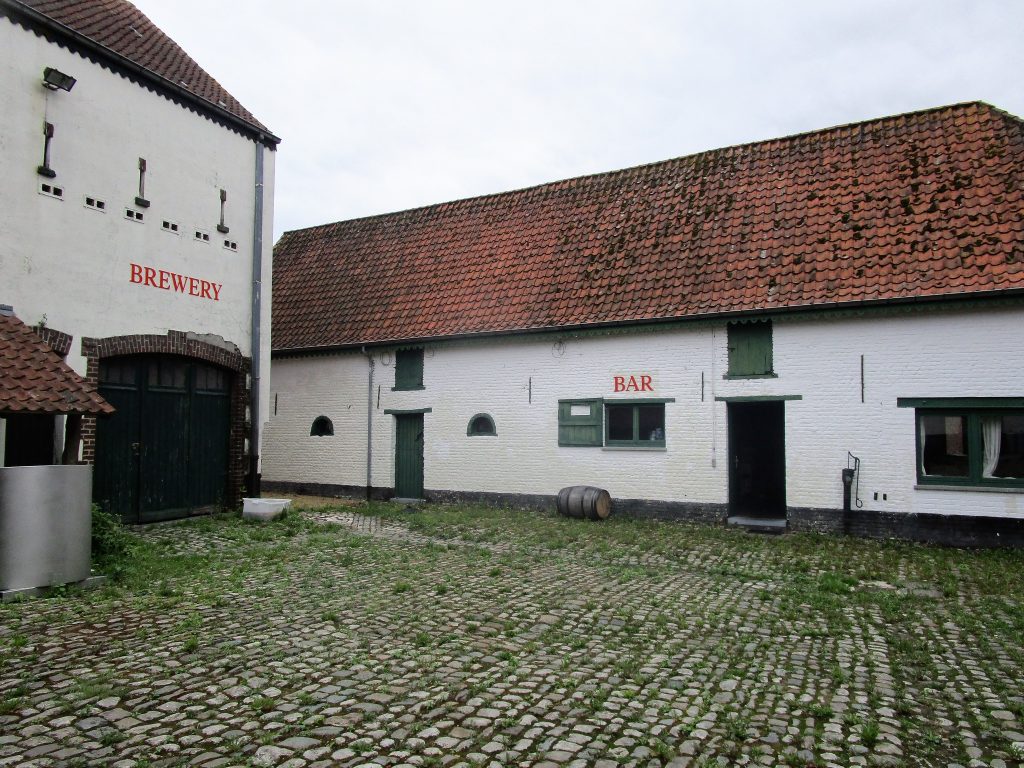
Co-owner and Business Manager Wim Krieckemans had this to say: “Our 2019 and 2020 batches were brewed at Brouwerij Den Herberg in Buizingen. The wort sat in their coolship overnight, and the next day, it was transferred to our site and pumped into oak barrels for aging.” Den Herberg is a great brewery and bar, which I wrote about in this previous article here.
I visited Kestemont’s brewery, barrel rooms, and two old Goossens breweries in February 2023, on a cold day perfect for brewing lambic. I was accompanied by lambic aficionado Dave Atkins of the U.K. (Dave has his own reserved table at Brasserie Cantillon, being their most regular customer) and Lambic Tour guide extraordinaire Patrick Van der Spiegel of Halle. See the bottom of the article for full details about Patrick’s tours.

Brewer Lias Kestemont and his father, Francis, co-own Kestemont with Wim Krieckemans. Lias handles all the brewing and blending. Wim Krieckemans is married to Francis Kestemont’s daughter, Lara Kestemont. So Francis is his father in law, and Lias is his brother in law. Wim handles all of the business affairs of the brewery.
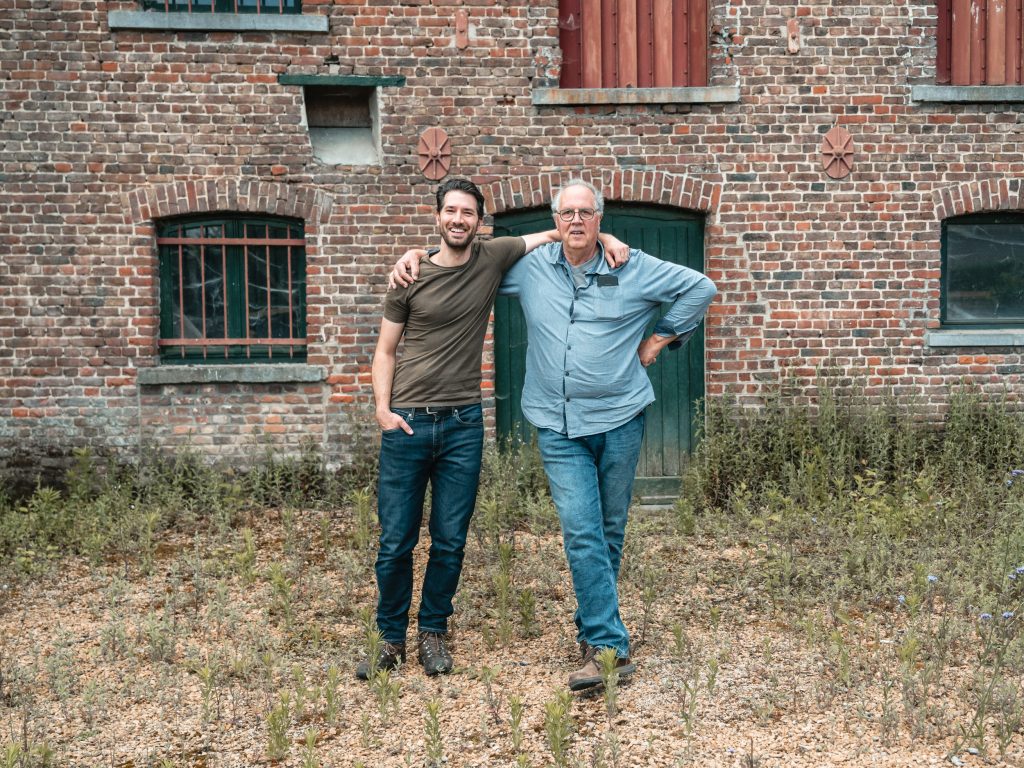
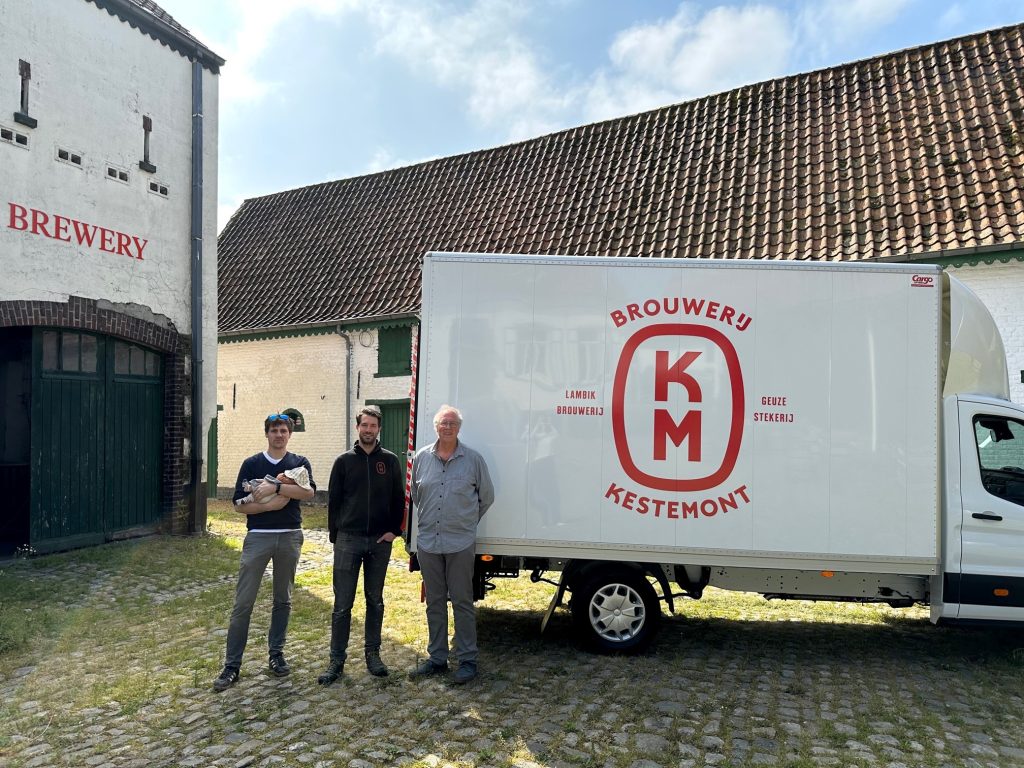
Lias described his brewing experience: “I started as a home brewer, what we call a hobby brewer in Belgium. It was a long road of self-study, reading, talking to people, and most of all experimenting. I did this for ten years before starting to brew lambic here.”
About the lambic brewing, Lias had this to say: “We utilize a long boil of the wort, about 3 to 4 hours, as at other lambic breweries. After the wort cools overnight in our coolship, we pump it into our own oak barrels for aging.”
About their barrels, Wim had this to say: “We have many barrels that previously held Cognac: there are 21 in the 500-liter size; 47 in the 450-liter size; and one with a 600-liter capacity. There are also 180 former French wine barrels in the 225-liter size; and 25 barrels that previously matured Italian wines, with a 500-liter capacity.”
That is quite a few barrels!
“The current brewery and barrel aging building originates from at least in the 1700’s as a barn, but no exact year is known. The remodeling of it in its current state was completed around 1884, and it was renovated again in 1947. The oldest evidence from maps and records are from 1771 for that building,” Lias Kestemont says.

Lias’s father, Francis Kestemont, was and still is an organic farmer with a forty year career in Lennik and the surrounding area. He is a man born and bred in the “Pajottenland” who wanted to preserve the historic Goossens site, and add a new brewery to it. “I came home one day and told my family that I had bought a lambic brewery!” he says.
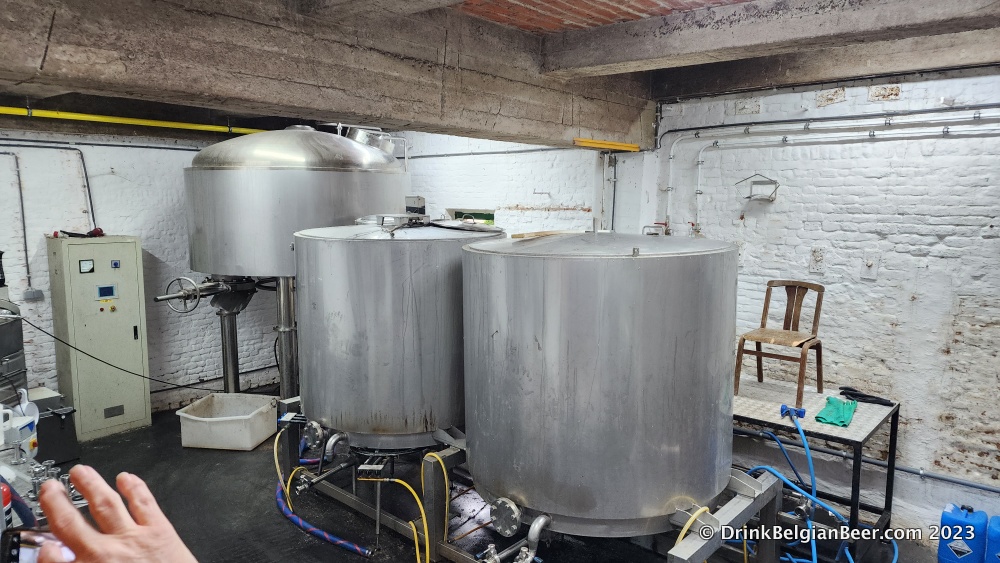
Lias remarked that most of the fruits used in the Kestemont lambic beers are grown by the family: “We are organic vegetable farmers with a small production of fruits, like strawberries and raspberries. For the brewery, we grow our own wheat, and most fruits, such as sour cherries, including the Schaarbeek variety, as well as raspberries, blackberries, red, green and yellow gooseberries, rhubarb, red currant and black currant.”

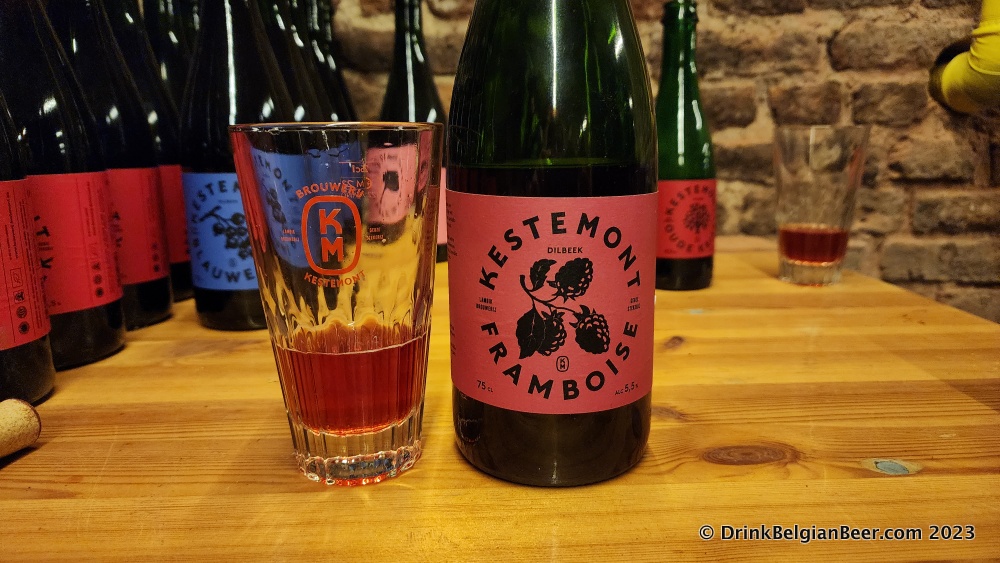
Wim commented in late July 2023: “We currently have 18 different beers, of which 12 are available on the market. Our first batch of Oude Geuze is to be released shortly, and will contain, 1, 2, 3, and 4 year old lambics. Some beers that are in the pipeline include blackberry; a stronger Oude Geuze; and lambics with blood orange, bergamot orange, red currant, and red gooseberries.”
That is a lot of fruited lambics!
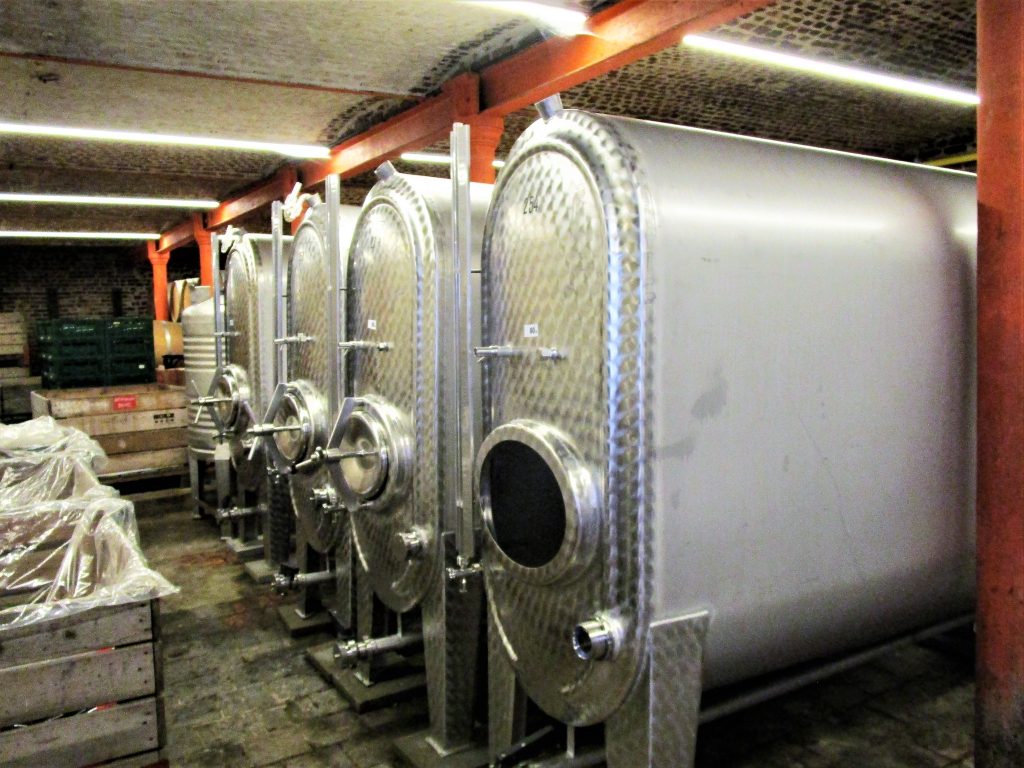
As to the age of the lambics used in their fruit beers, Wim had this to say: “For our fruited brews, the lambics used are at least one year old, but are often a blend of one, two, and sometimes three years old, depending on the beer.”
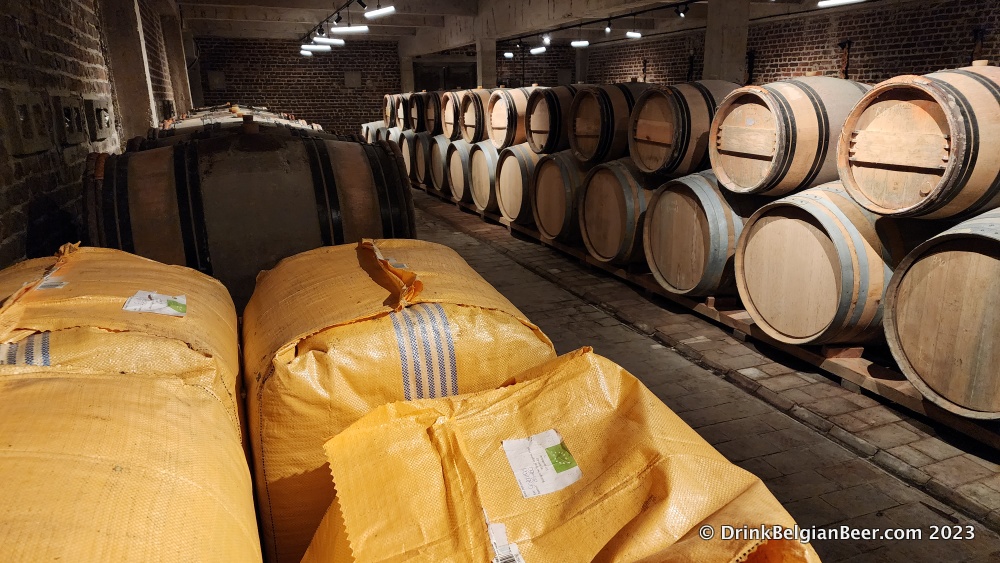
Kestemont added four new stainless steel tanks that will be used for macerating fruits in June 2023. See photo above. The unusual shape of these tanks is due to space considerations, and the restrictions on modifying historic buildings in Belgium: “The downside of operating out of buildings which are heritage and protected by the government is that you can’t just make bigger openings to fit something through,” Wim remarked.
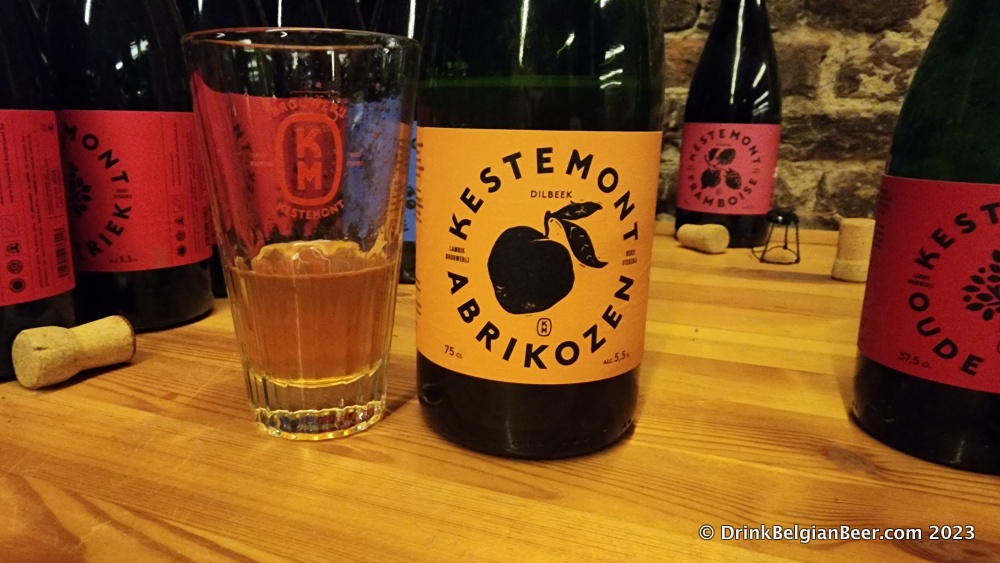
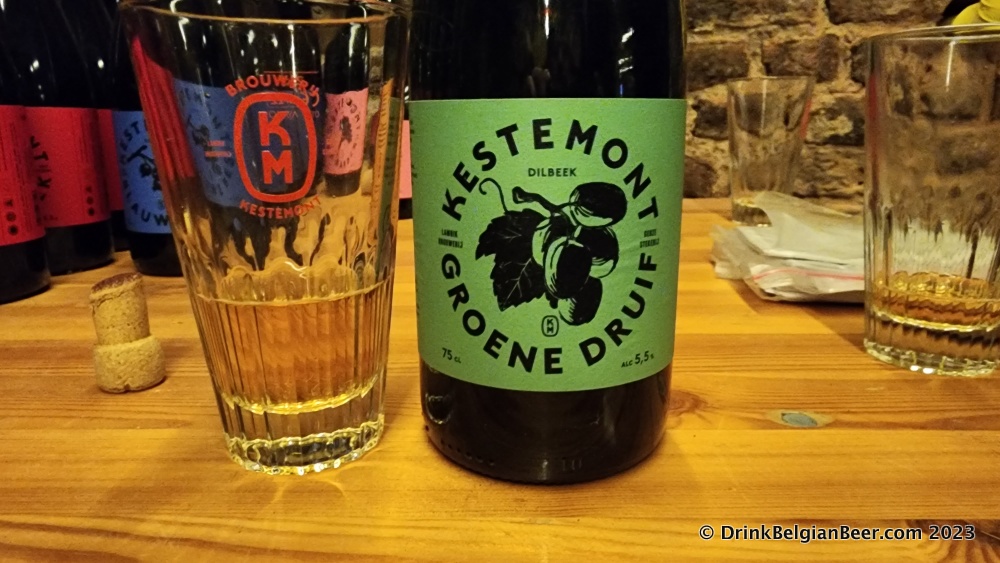
The brewery itself was bought second hand from Brouwerij De Sater in Nazareth. It has a capacity of 16 hectoliters (about 13.6 U.S. beer barrels) and was originally built for dairy (milk) production. Using old dairy setups is quite common in Belgian breweries. “We brewed 23 times this past winter (2022-2023) for a total volume of 345 hl (294 U.S. barrels) of lambic,” Wim commented.

Kestemont is currently preparing to open a bar and a terrace (patio) so patrons can visit and sample their beers on site for the first time. “We are planning to open to the public for ‘The Month of Lambic in Flemish Brabant’ in October,” Wim says. “We are really working hard to get this done. We will likely open on Fridays and Saturdays, probably between 11 am and 7 pm, or something like that.”
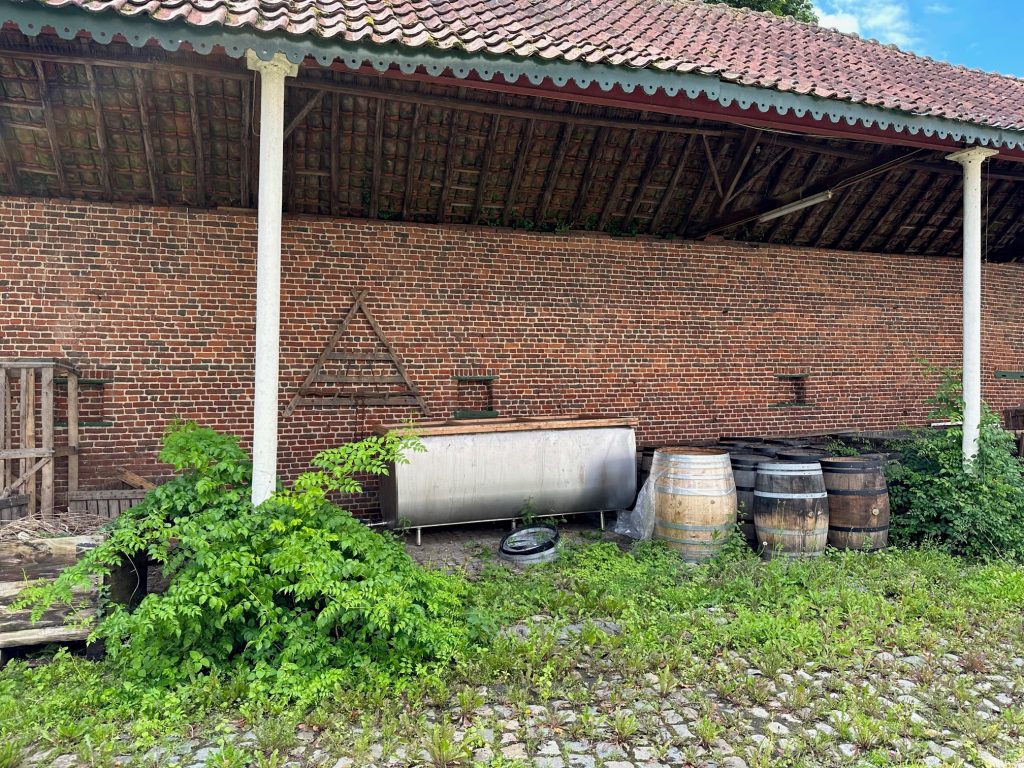
Wim added: “We are working on our tour guide, website changes, and booking system as we speak. We’re also redoing the tap room a bit.”
“The Month of Lambic in Flemish Brabant” is organized by the Tourist Office of Flemish Brabant. Johan Deknopper of Toerisme Vlaams-Brabant had this to say: “We will probably make some promotions of the events happening at this year’s Month of Lambic, which will happen the whole month of October, via our Facebook page here.
There is good news from Kestemont for lambic beer lovers in the U.S. and Italy. Wim says: “We are working on an export deal to the US with Pontier Imports of Pennsylvania. So our beers should be available, mainly on the east coast to the midwest, somewhere over the next few months. We will also be attending the 17th Villaggio Della Birra in Tuscany early September and the BXLBeerFest in Brussels in October.”
The BXLBeerFest in Brussels is one of the world’s premier beer festivals, which I wrote about in this previous article here.

Kevin Desmet, one of the organizers of the BXLBeerFest, had this to say: “We are pleased to welcome Brouwerij Kestemont for the first time to our BXLBeerFest, and look forward to attendees having the opportunity to taste their brews, among the 400 beers from 60 different breweries that will be on offer.” The festival will happen on September 30 and October 1, 2023.
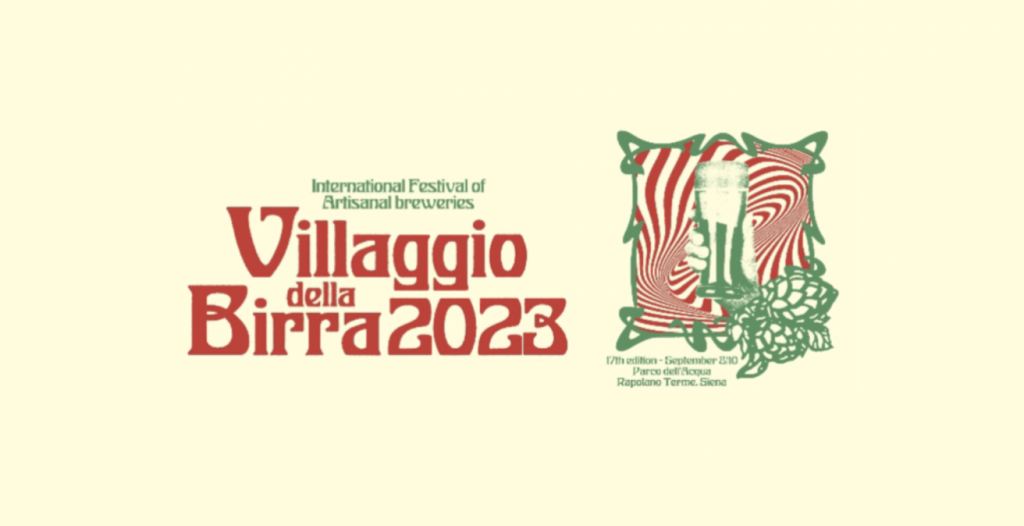
Likewise, the Villaggio Della Birra is also one of the world’s most highly regarded beer festivals, which will be held September 8-10. 2023. Festival co-organizer Lorenzo Dabove, who is also known as “The Prince of the Payottenland” due to his love of lambic beers, had this to say: “I think it would be interesting to know why the Kestemont guys will be present in the 27th edition of the extraordinary beer festival, located on the middle of the Tuscan hills that are renowned for wines. When I visited the brewery in November 2022, I appreciated their friendly welcome, and fruit beers. I then invited Lias & Co. to Villaggio della Birra. They enthusiastically accepted my invitation. Italian lambic lovers will be happy to better know them and their beers.”
Pontier’s Brand Acquisitions & Development Director is Kevin Brooks, a former long-time Shelton Brothers associate/brewery rep and filmmaker. Kevin knows the importing business well. He had this to say: “I spent a decade at Shelton Brothers Imports. After their closure and the covid years, I was missing many of the smaller, traditional, and esoteric beers like those that Shelton focused on. It was then that I was approached by Pontier Imports and asked to help build and shepherd their portfolio with a focus on the types of drinks I love.”

Kevin’s background includes working in the film and TV industry for over 25 years, on projects including NBC, CNN, Discovery Channel, History Channel, VH-1, PBS, A&E, and MTV.
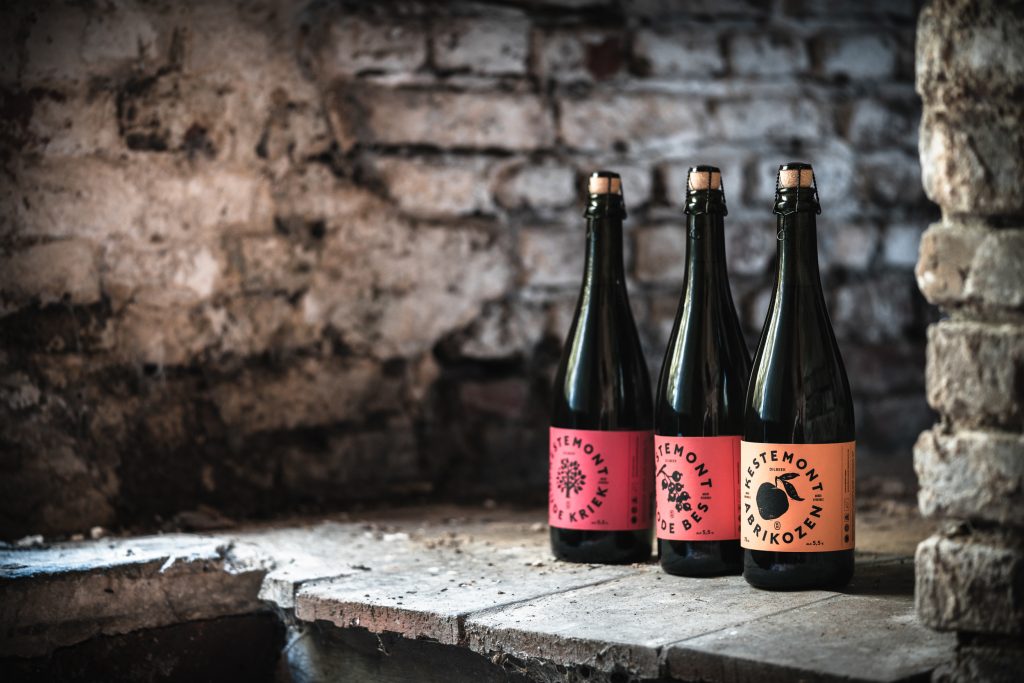
Kevin added: “I became mildly obsessed with lambics about 20 years ago. Lambic itself is like a liquid walk through history, something more akin to what the workers drank in ancient Egypt, than a cheap megalager, and that in itself fascinates me. I love it when the beer I’m drinking has a history or a story behind it, something that speaks to the culture from which it came.”
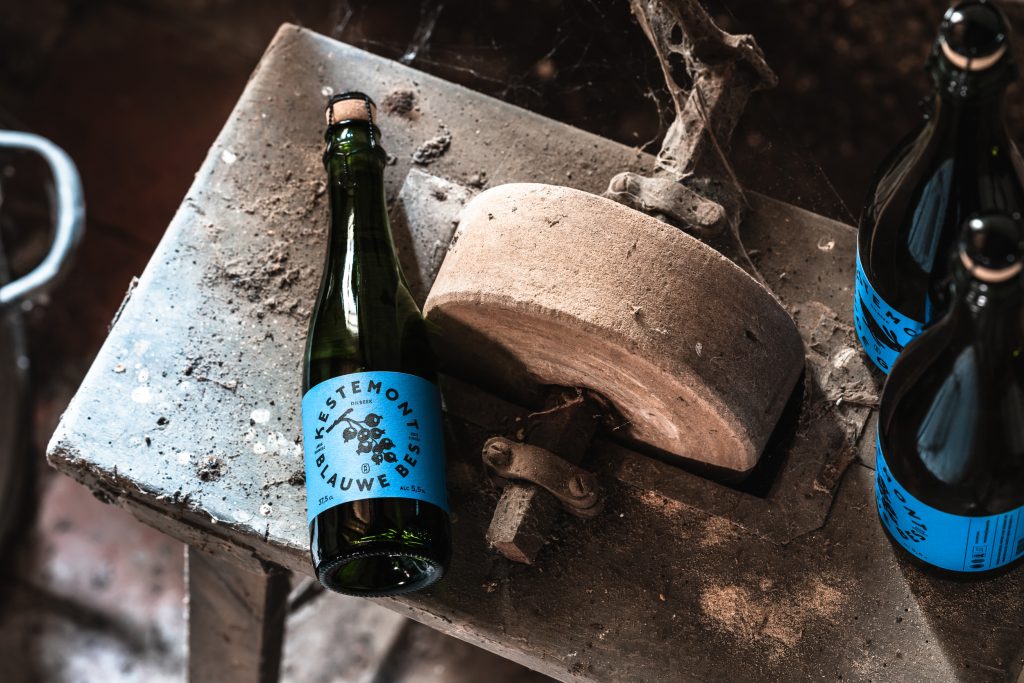
He continued: “Over the past decade and a half or so, we’ve seen a handful of spirited folks begin their own traditional lambic breweries and blenderies in Belgium. The fact that Kestemont is doing this on the same site where Brouwerij Goossens operated for two centuries is an amazing story.”

Kevin continued: “Pontier Imports will begin importing and distributing Kestemont’s beers on the east coast of the U.S. this autumn. Like the brewery, we are beginning with the more traditional varieties: the oude geuze, framboise, and oude kriek. We will also have a limited quantity of straight lambic of various ages, so people can learn about how the beer matures and what goes into blending their geuze and fruited lambics.”
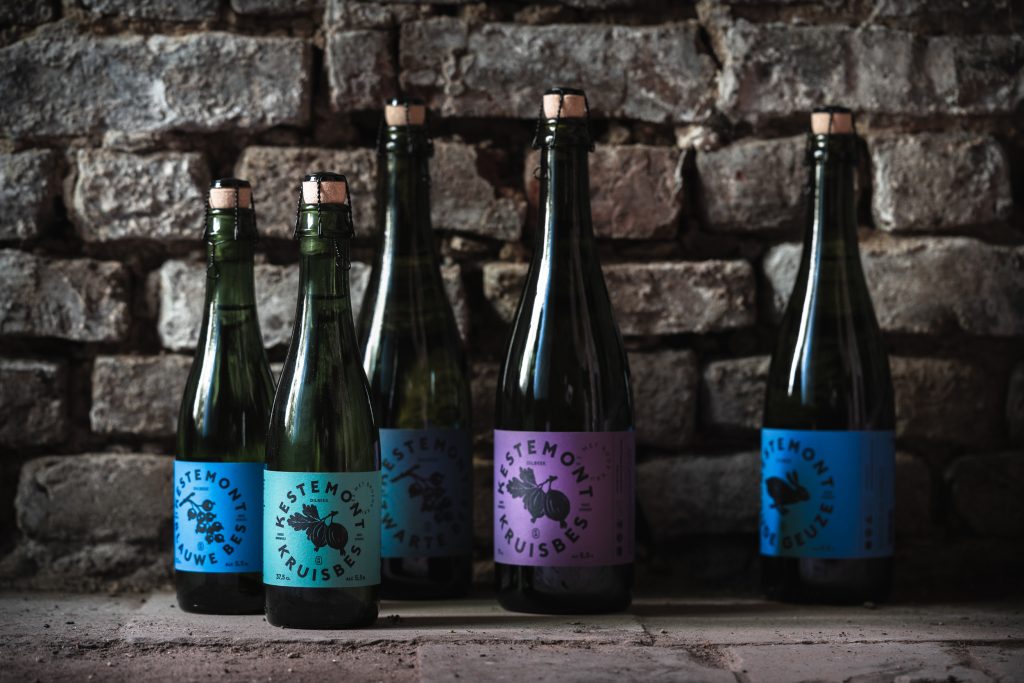
He added: “The more I researched Kestemont, the more intrigued I became. I love the fact they are very much in touch with the land. All of their beers are certified organic; in fact the owners are organic farmers. As a result, a majority of the fruits used in their various lambics are grown at the family’s farms nearby the brewery. The few remaining fruits are grown by farmers that the family already worked with. This is very much the way it was done in centuries past: the brewers were often also farmers themselves, or personally knew other farmers, and were their neighbors.”
I’m sure that beers lovers stateside will be happy to have more traditional lambic beers available to them!
There are not many details known about the history of the two Goossens lambic breweries, especially about the oldest original brewery. It likely dates to the second half of the 18th century. A much larger second brewery was first constructed sometime in the second half of the 19th century. Note that the brewery site was sometimes also referred to as “Brouwerij Sinte Gertrude.” There is also a large maltery building on the site, which likely also dates to the second half of the 19th century. Floor malted barley was produced there. Nestor Franciscus Goossens (born 1884) was the brewer during some of the 20th century.
In 1990, the brewery site and grounds were purchased by Frans Appelmans and Yvette Mary from the heirs of the Goossens family, and was restored. Appelmans and Mary also ran a construction business on the same site.
This Flemish government website describes the site and its buildings in great detail.

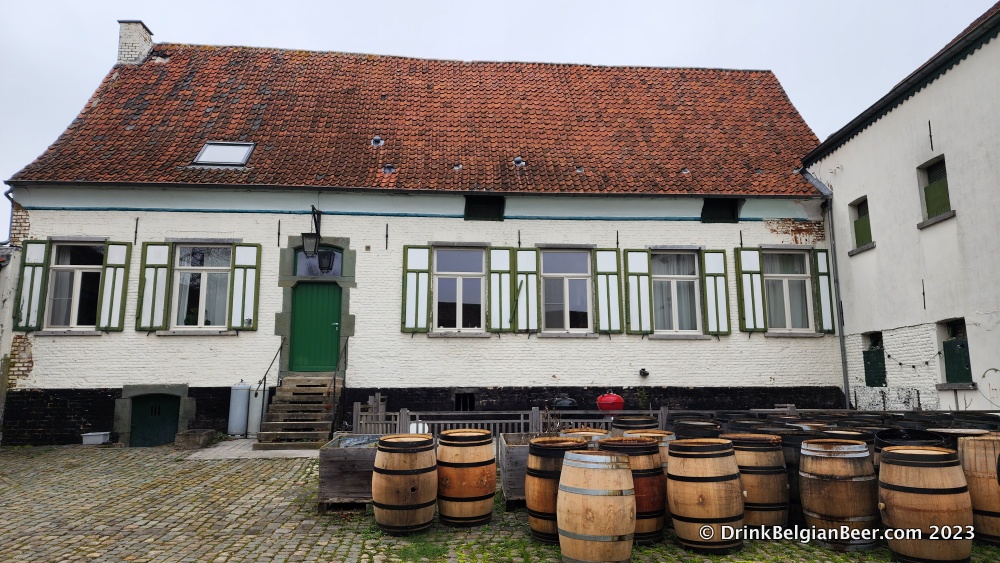
About the history of the site, Wim remarked: “The house that adjoins the street (Isabellastraat 16,
1703 Dilbeek) was last renovated in 1767, which is written on a ‘year stone’ on the front of the house. Sources indicate it is older than that, but no one knows for sure how old it is. Lias currently lives in this house.”
The Goossens site is adjacent to the “Watermolen van Pede” or “Pedemolen” which is, in English, “Watermill Sint-Gertrudis-Pede.” It dates originally to 1392. The current water mill dates to 1774, and replaced the original mill, which was destroyed by fire in 1763. This site is fairly important in Flemish history, as famous painter Pieter Bruegel the Elder depicted the original water mill in two of his paintings, “The Return of the Herd” (painted 1565) and “The Magpie on the Gallows” (painted 1568.) The site is still peaceful and picturesque, as it was in the time of Bruegel. The water mill was fully restored between 1989 and 2002, so this is an operating mill. It is open to visitors once or twice a month, depending on the season, and for groups by appointment. For more info see their website here.
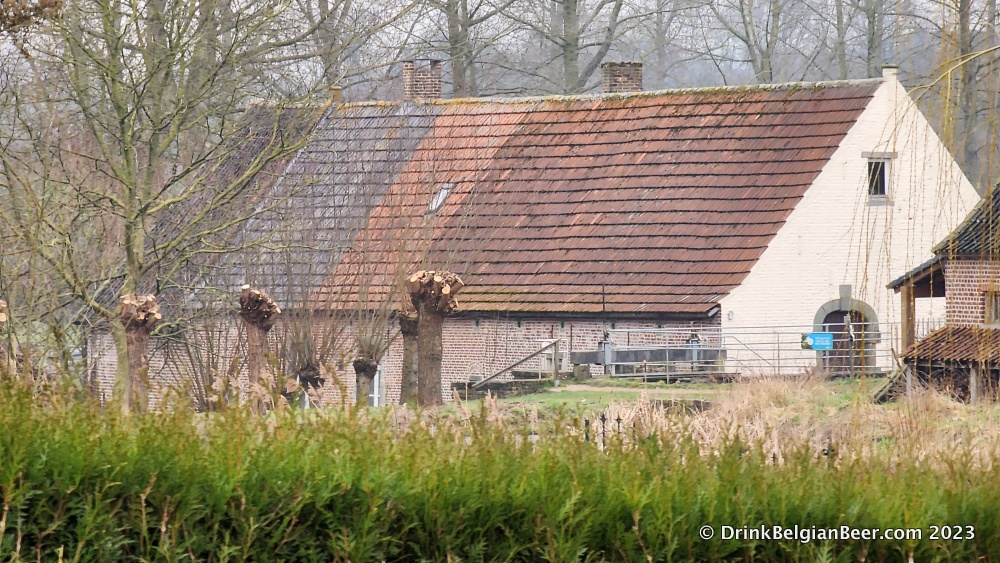
This is an excerpt from the Flemish government website about the site: “The farm-brewery complex is located in the center of the hamlet of Sint-Gertrudis-Pede. To the north, the site connects to the landscape-protected water mill site with mill ponds and the monument-protected water mill of Sint-Gertrudis-Pede (Lostraat 84). The brewery-malthouse used the water from a side stream of the Molenbeek or Pedebeek that forms the border between the two sites. In the 19th century this caused a conflict between miller and brewer who both used water from the stream. To the west of the old brewery with malt house, a pool has been preserved. This small pool served as a water reservoir and was filled with water from the stream.”
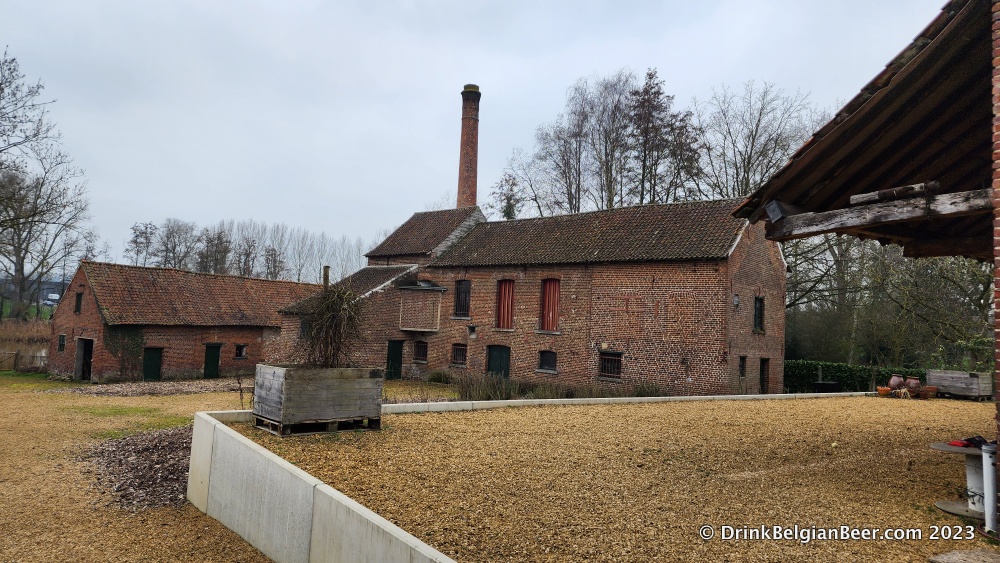
More from the Flemish government website: “The buildings of the Goossens farm brewery, especially the house and the warehouse, are iconic for the village center of Sint-Gertrudis-Pede. They characterize the rural character of this hamlet together with the protected watermill and an 18th-century farmhouse (Isabellastraat 11) between the mostly 20th-century residential buildings.”
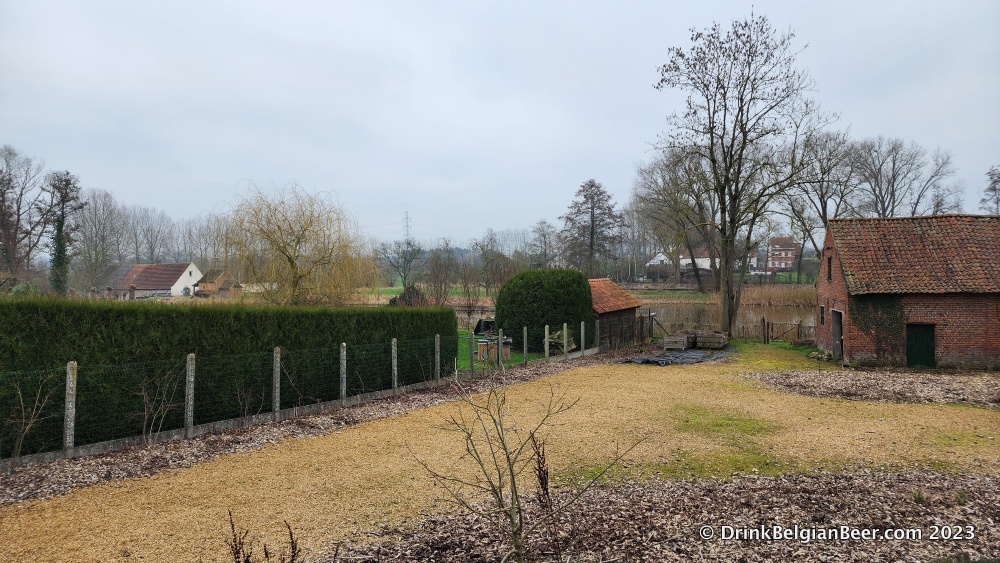
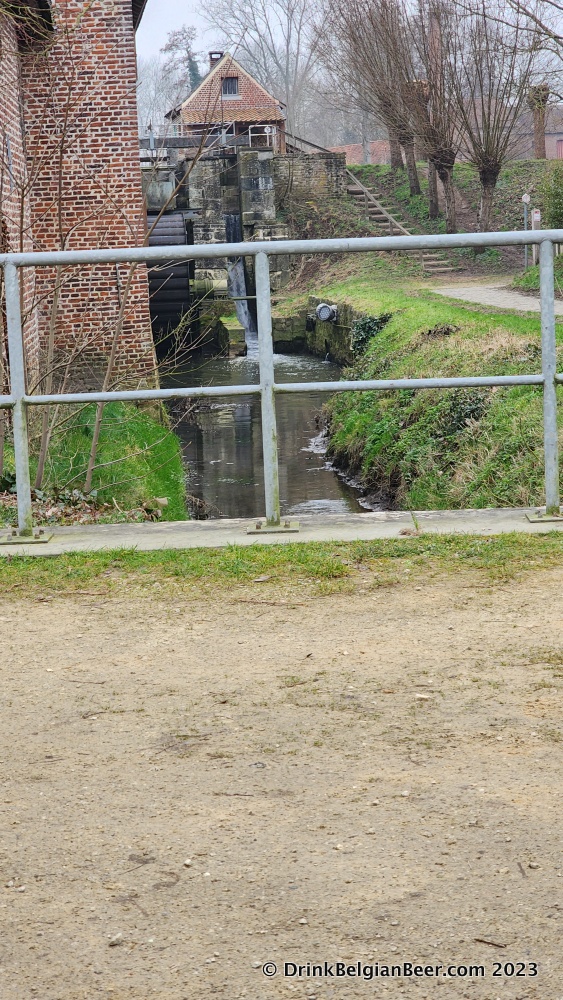
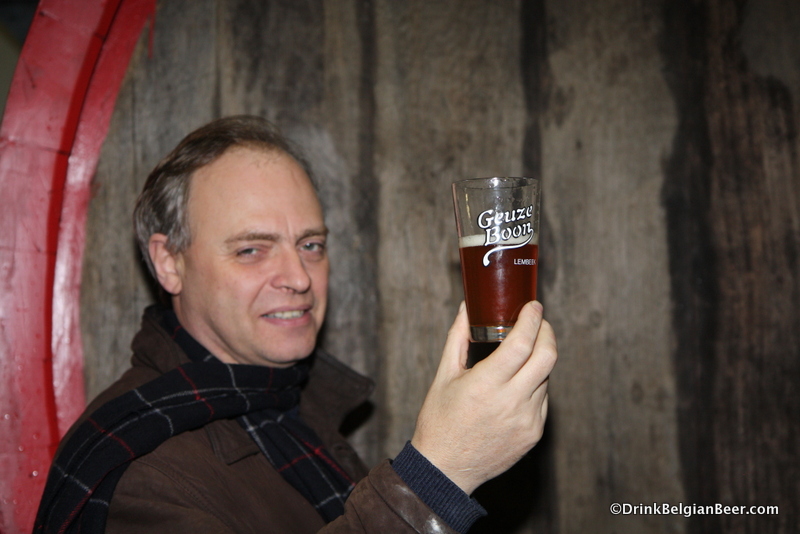
In 2014, lambic brewing legend Frank Boon of Brouwerij Boon, which I wrote about in this previous article here, had this to say: “I visited this brewery in early 1970. The coppers were not present anymore, but there was a coolship and mashtun (in cast iron). Capacity of about 40 HL. They sold nearly all their beer as young lambic in small wooden casks without pressure and in casks from 80L, 180L and 250L for farmers and cafés. Geuze and Kriek only small production. I don’t know about malting. I know there was a malting unit at De Neve Brewery which was at approx. 200 meters distance from Nestor Goossens.”
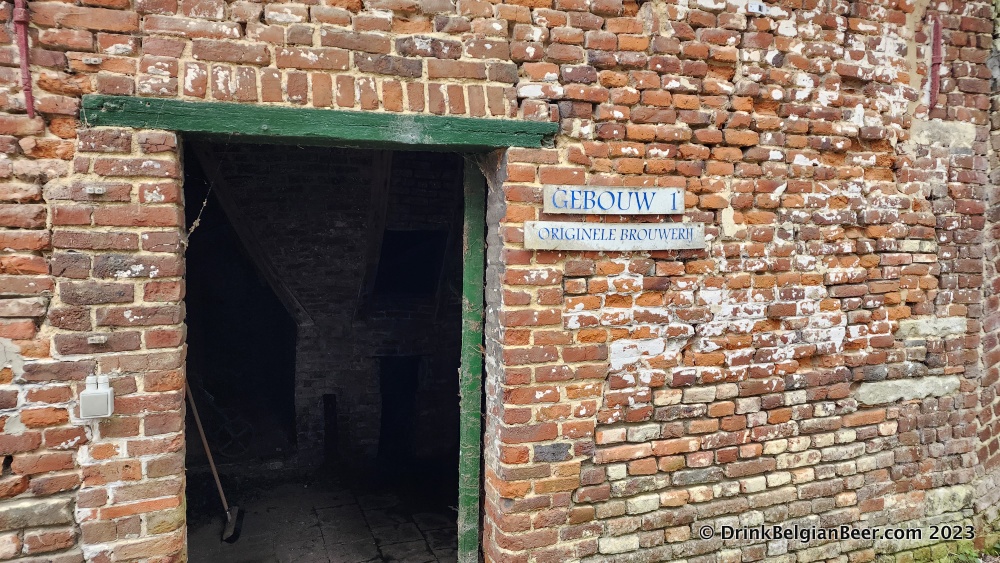
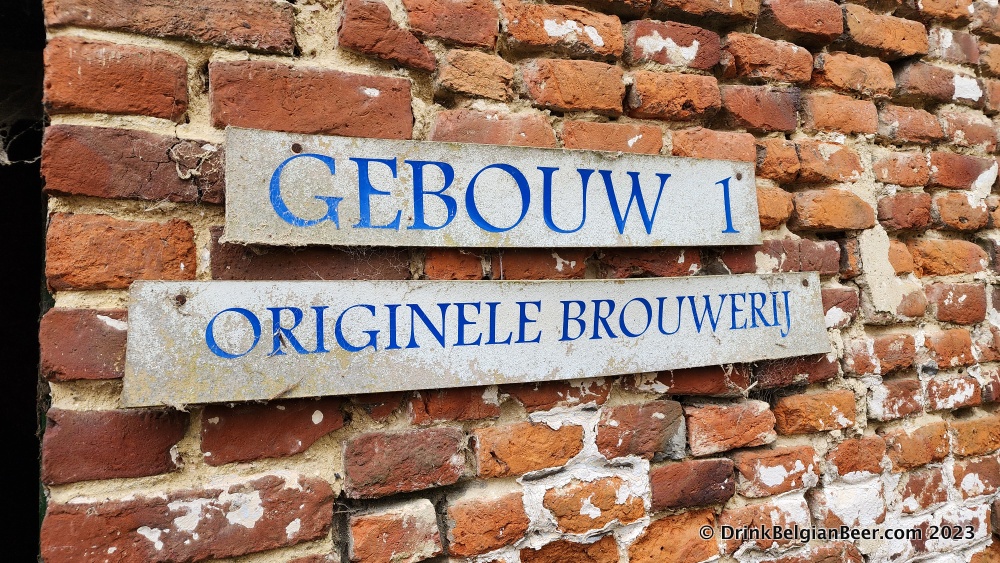


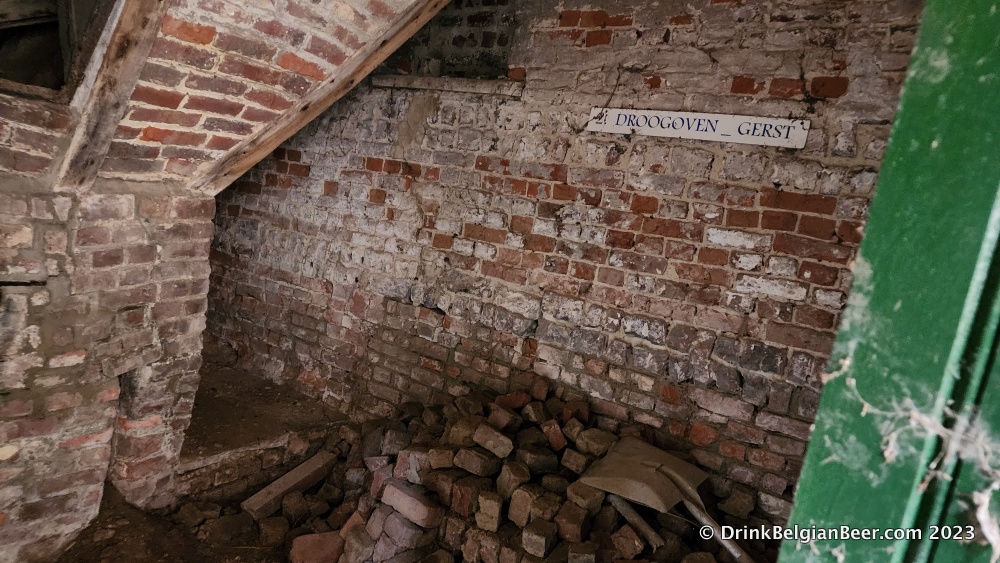
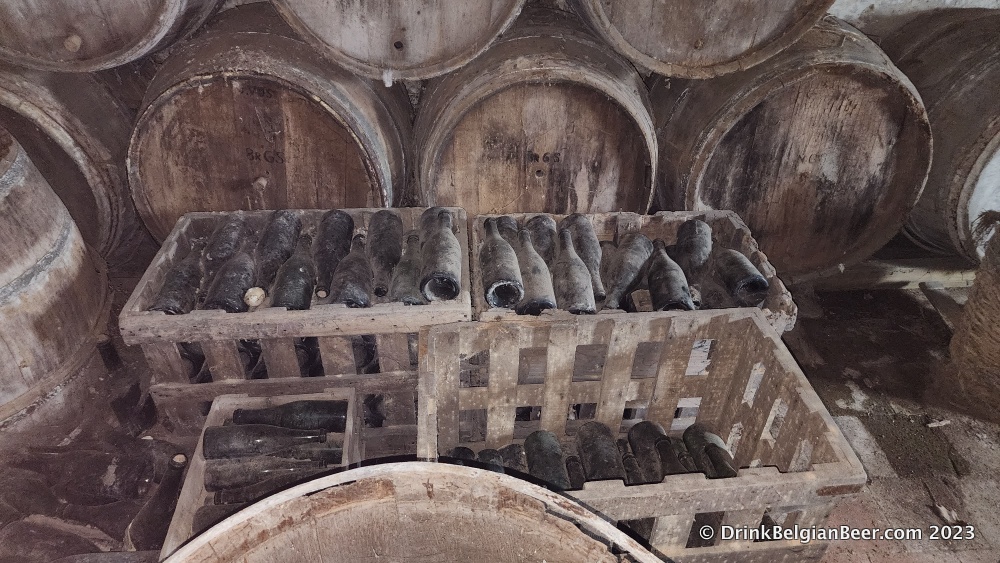


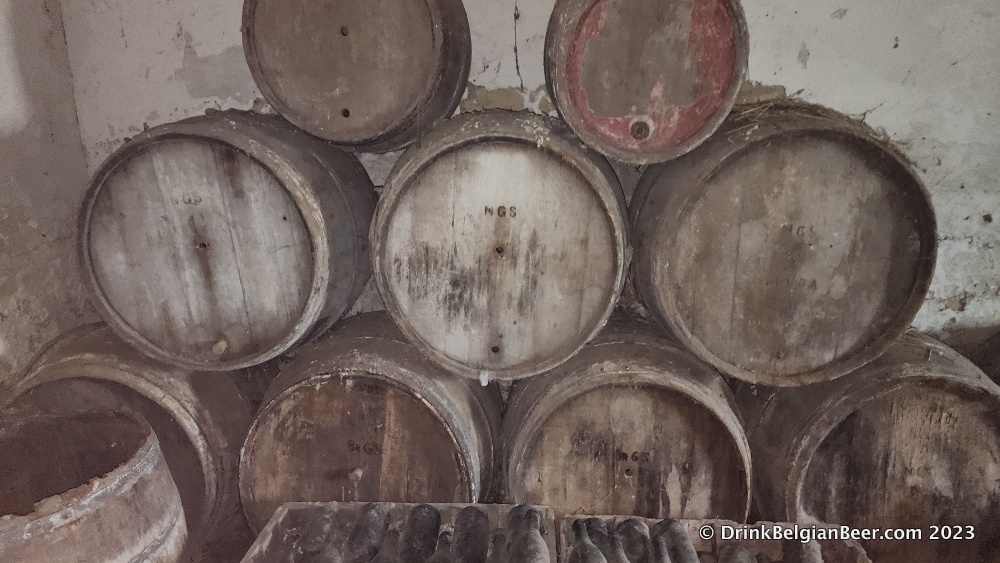
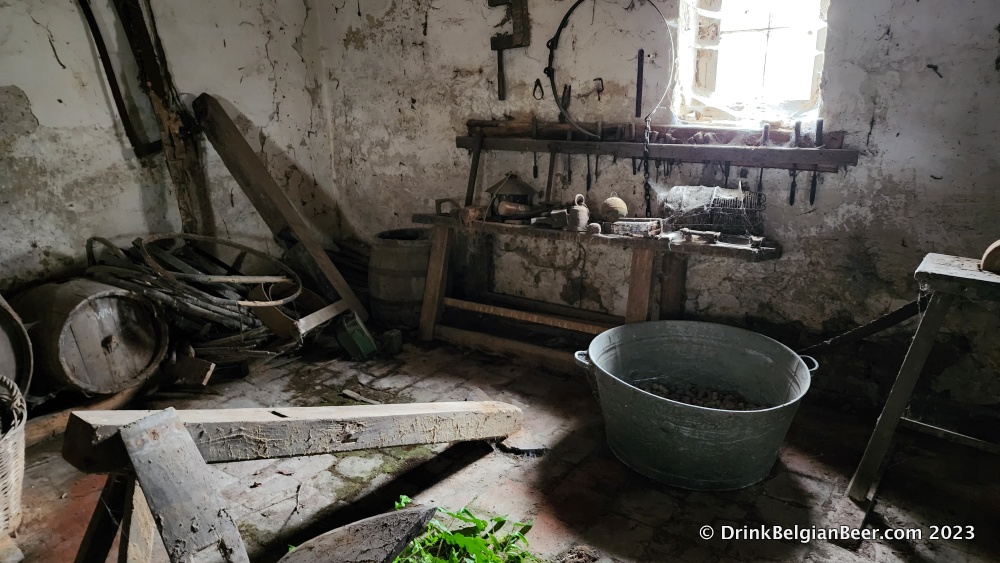
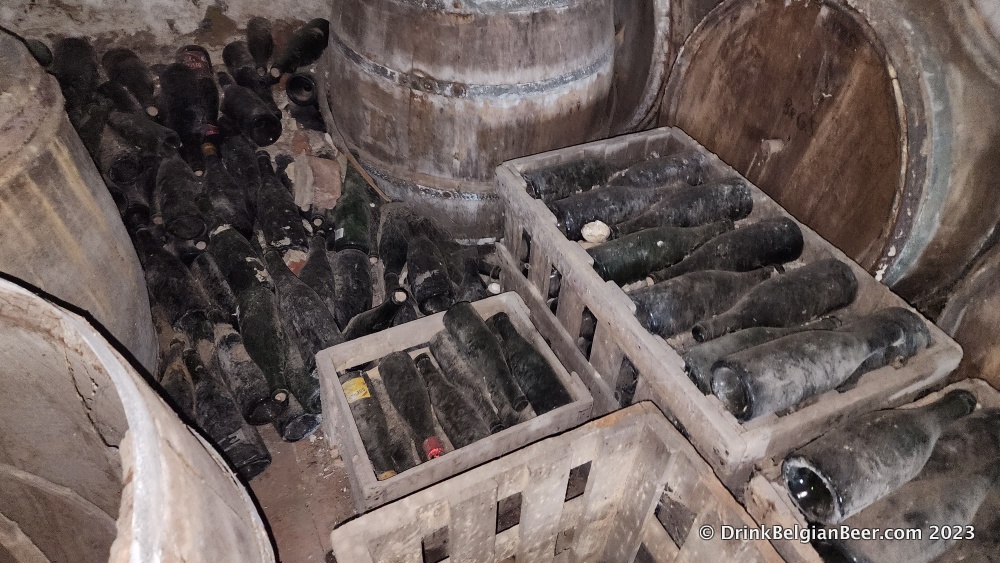

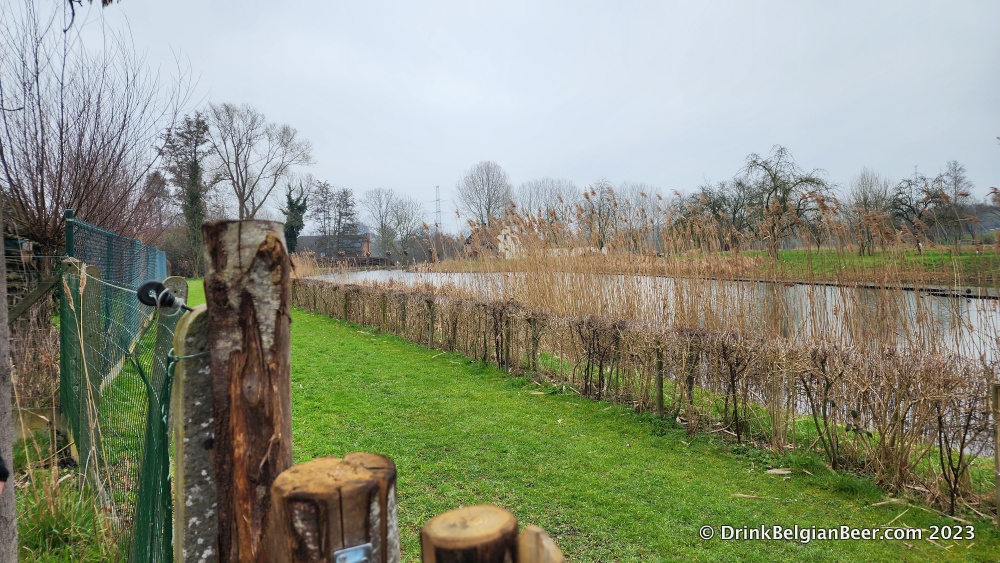
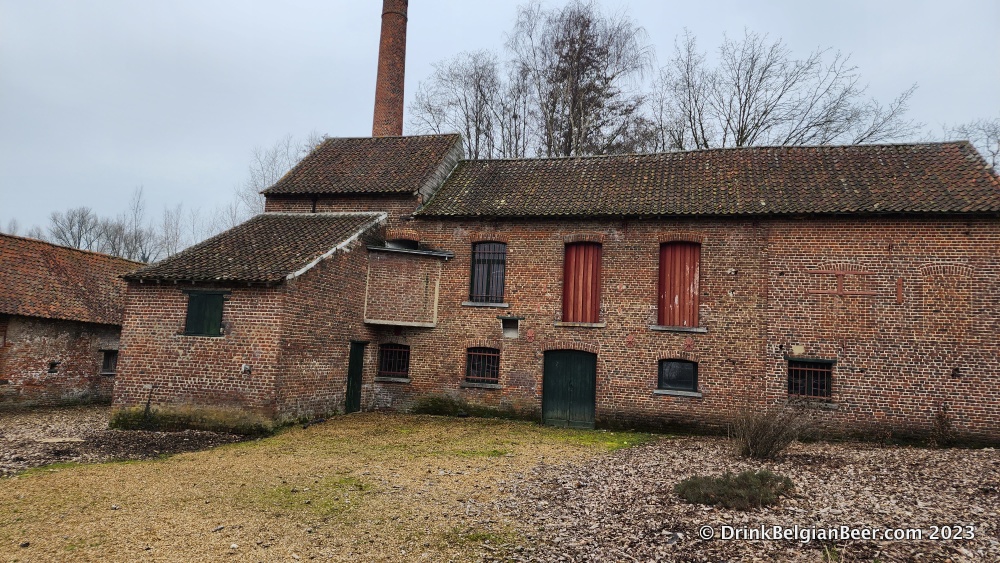
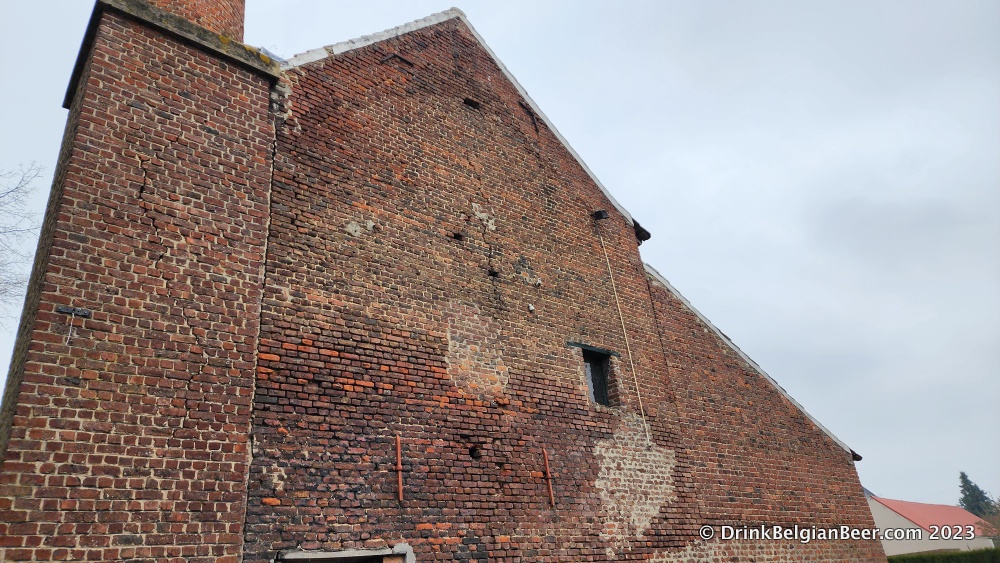
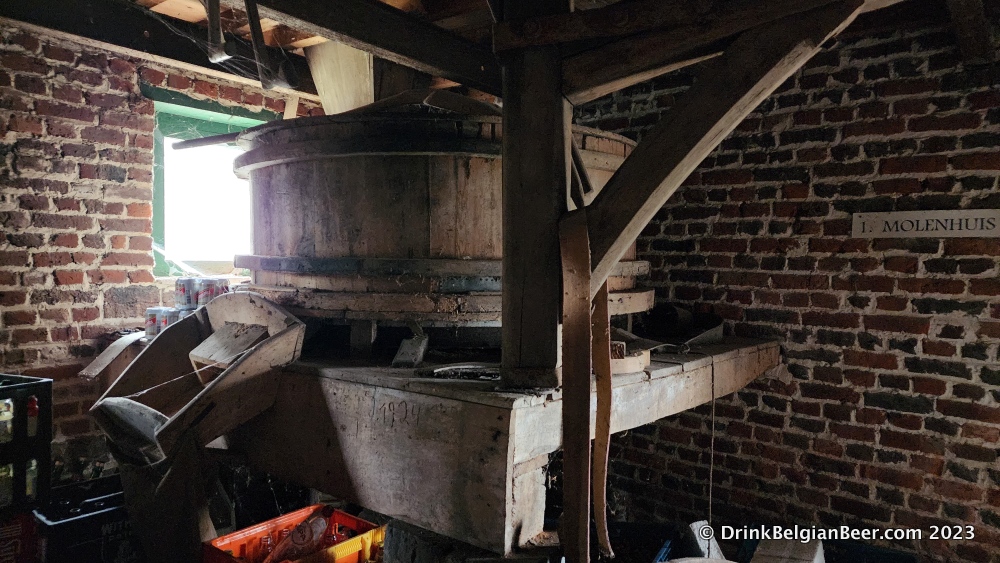
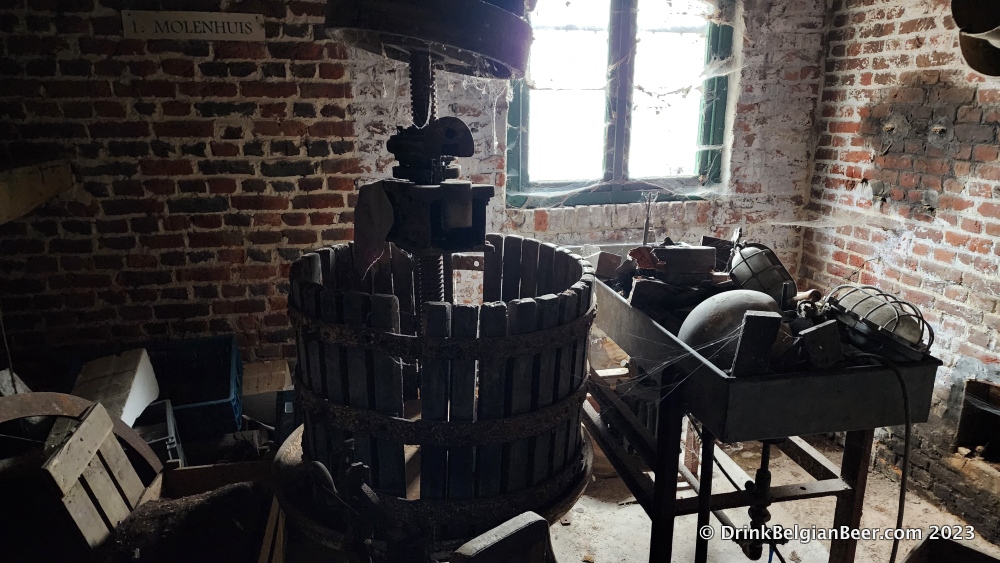
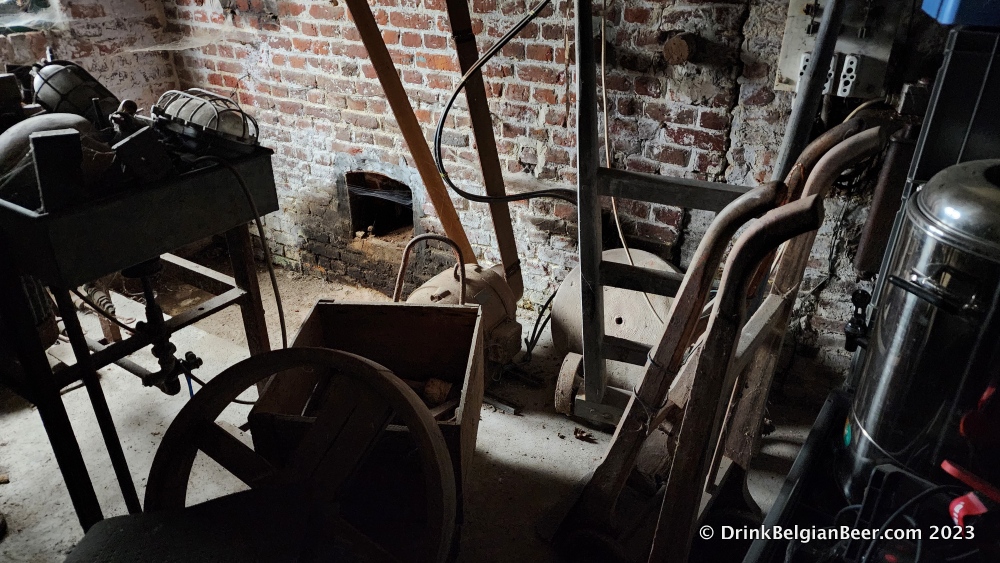

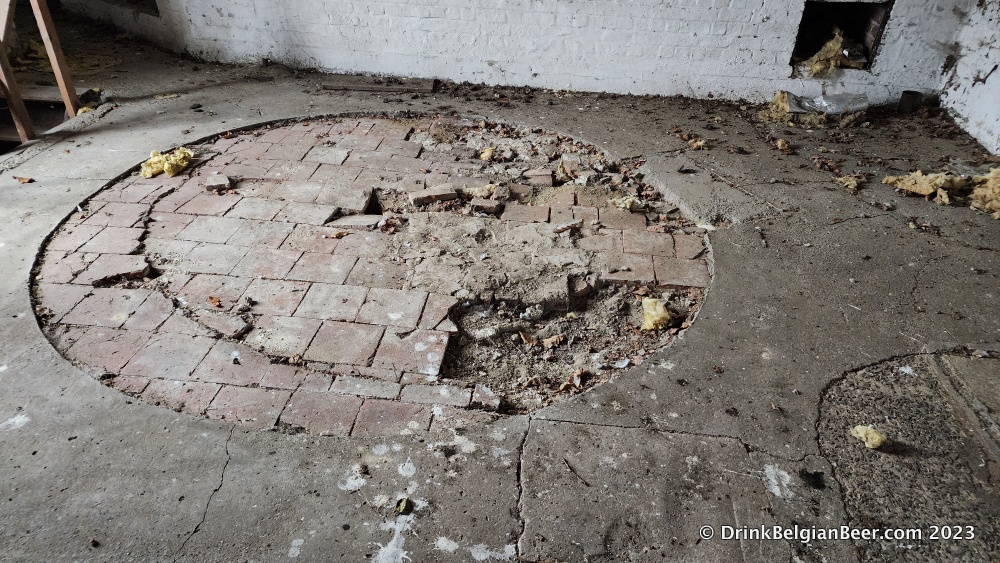
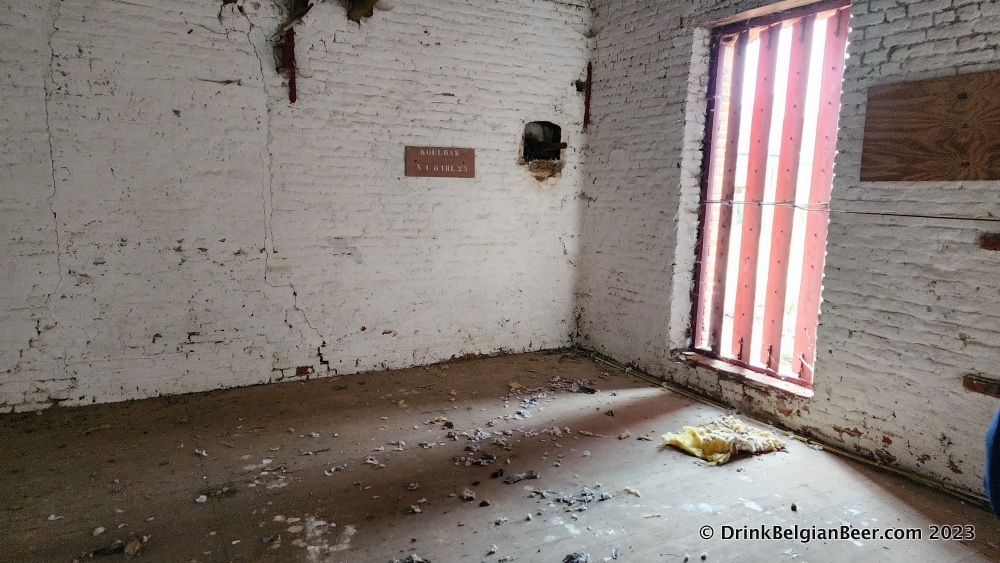
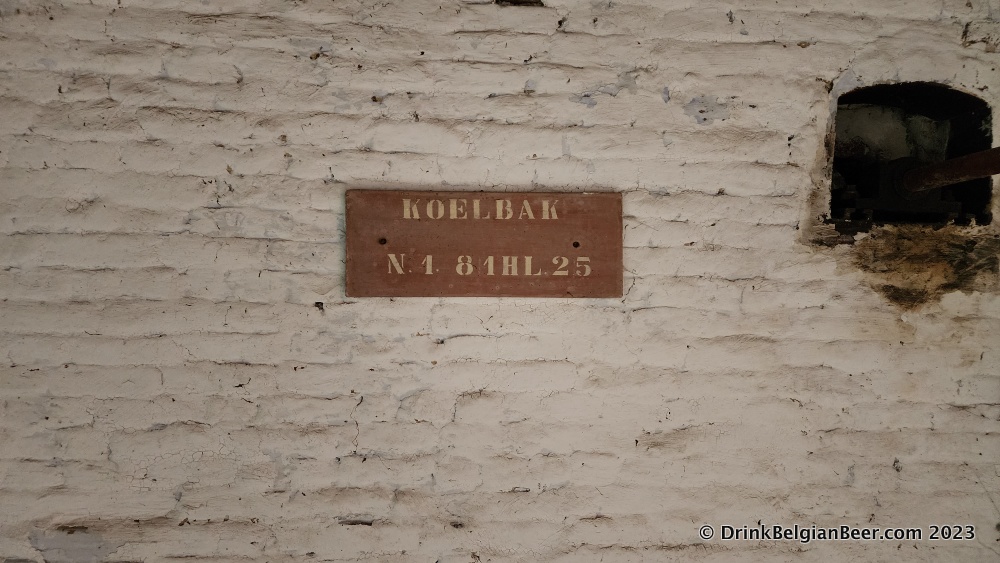
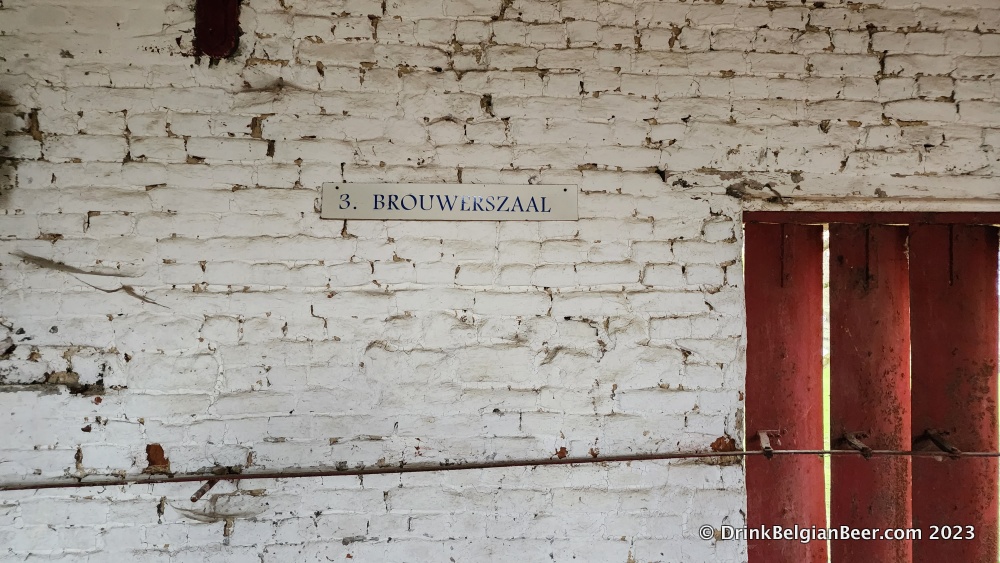
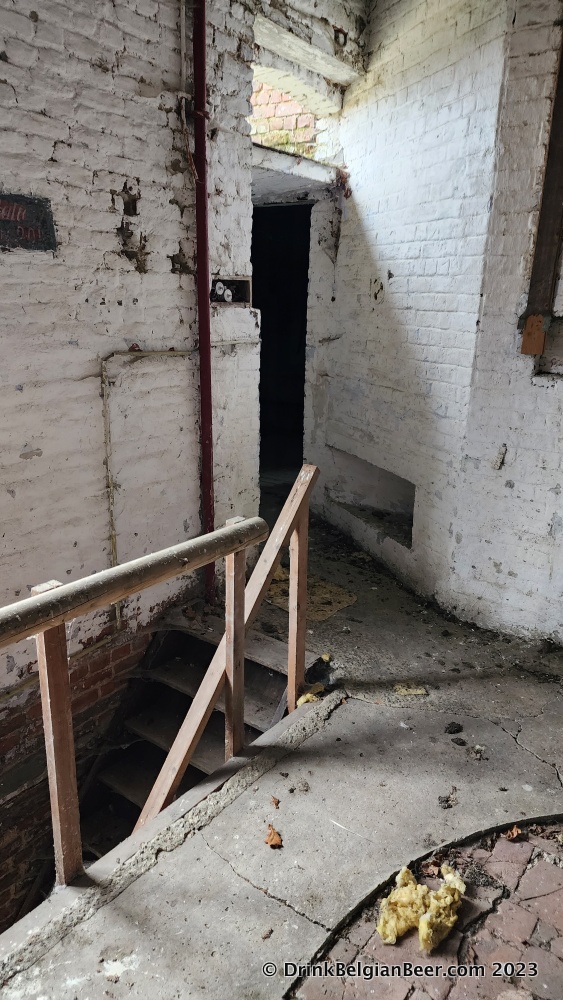
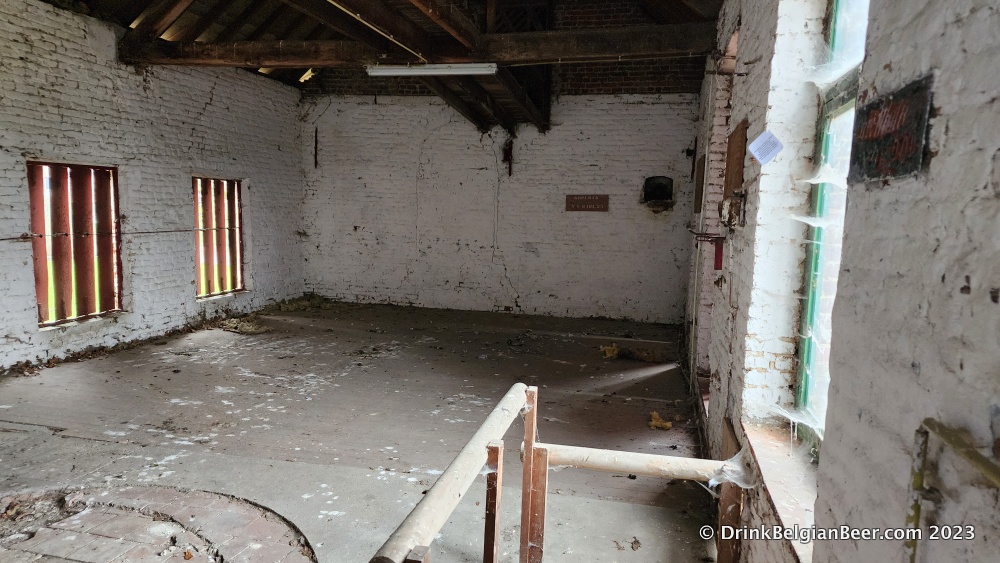
This historic site is most impressive. I urge anyone who has the chance to visit, once the new Kestemont taproom opens. This place should be a pilgrimage site for lambic beer lovers.
Brouwerij Kestemont is located at Isabellastraat 16, 1703 Dilbeek. Their telephone is 32 2 532 25 52.
Brouwerij Kestemont, like so many of the great breweries, cafes, and distilleries in Belgium’s Payottenland and Zenne Valley, is not easy to reach by public transport. Belgium’s drunk driving laws are very strict, so I recommend visiting the area with a local, or with a group.
One such person is Patrick Van der Spiegel. As a resident of Halle, ten miles southwest of Brussels in Belgium’s lambic country, he has lived his life savoring and enjoying lambic brews. Patrick has two projects, “The Land of Geuze” and “Lambic Tours” which both have Facebook and Instagram pages. The Lambic Tours website is here.
To sum up, Patrick Van der Spiegel organizes tours to lambic breweries, geuze blenderies, and traditional Belgian pubs in and near the Pajottenland and the Zenne Valley. Patrick guides these tours himself, and can do so in English, Dutch, and French. In addition, there is the possibility to pair these tours with guided tours at breweries or blenderies, with professional tour guides, or lambic brewers/blenders. These tours typically include tasting samples of multiple beers, and an optional lunch or dinner for the whole group.

If you are interested in these custom guided tours, feel free to fill in the contact form on their website (lambictours.com) or send an email to patrick@lambictours.be. It is also possible to send private messages through their Instagram and Facebook pages.
Patrick’s lambic tours can be summed up in one word: Marvelous!
If you like this website, please like our Facebook page here
and our Instagram page here
and our Twitter page here


Leave a Reply